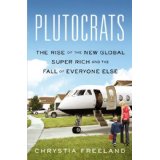 I’m fascinated by the psychology of Dallas-based entrepreneur Sam Wyly, recently ordered to disgorge $1.1 Billion for maintaining an extensive offshore scheme that led to convictions and penalties for securities fraud and tax evasion.
I’m fascinated by the psychology of Dallas-based entrepreneur Sam Wyly, recently ordered to disgorge $1.1 Billion for maintaining an extensive offshore scheme that led to convictions and penalties for securities fraud and tax evasion.
I’m interested in knowing: What the heck was he thinking?
I mean, I gather Sam was motivated to not pay too much in taxes. And I’m sympathetic, to a point.
Mike’s First Immutable Law of Taxation is that “Every tax action causes a tax-avoidance reaction.” The government passes a tax law. We, the taxpayers, try to delay, defer, and minimize those taxes.
That’s not always a bad thing, since Individual Retirement Accounts (IRAs) for example are in part a tax avoidance reaction. Reducing our personal cigarette or gasoline consumption is another potentially positive response to increased taxes.
We should expect and even condone a degree of tax deferral and tax minimization. I would even agree that you have a duty to your own family and your potential future philanthropic agenda as you get wealthier to prudently pay to the government only what you owe, and not a penny more.
And then there’s the Wylys. I mean, come on, guys. I don’t mean to be overly moralistic about them. I’m puzzled by the unnecessary risks they took.
Self-sabotage
What makes me shake my head even is the needless self-sabotage involved. None of their tax evasion – if they’d sort of stopped to think about their true self-interest, properly understood – really helped them in the long run.
Picture yourself as Sam Wyly. You show an extraordinary and wide-ranging knack for building businesses and making money over the decades in computers, retail, restaurants, and insurance. You are rich beyond any reasonable expectation, especially considering where you started in life.
You are a Texas Miracle. A Man in Full. You and your brother Charles are the American Dream, personified.
Not only that, but you give generously, funding endowments to The University of Michigan, and Louisiana Tech. Your brother Charles funds a theater in the Dallas Arts Center.
This is not enough, apparently.
You listened in 1992 to a clever promoter of offshore schemes to minimize your tax bill in a variety of ways – reducing income taxes, capital gains taxes, future inheritance taxes, gift taxes – all the while shielding your financial empire from the prying eyes of US tax authorities.
The plan is a bit untested. All sides admit it is an “aggressive scheme” and will require an alert team of attorneys, family office managers, trustees, accountants, and heavy reporting requirements to stay on the safe side.
An independent tax expert in 1993 – after you’ve initiated the series of offshore trusts, corporations, and money transfers intended to obscure your assets – opines that the scheme as executed probably isn’t legal. Not deterred, you continue to create new offshore entities in 1996, neglecting to investigate the “grey areas” of the scheme and failing to file proper disclosures as recommended.
Maintaining the scheme requires you to engage in circular money transfers between onshore and offshore entities to hide the origin of your funds, to use made-up “friends” who create offshore trusts on your behalf, and to hide ownership of public shares behind shell corporations to evade securities laws on disclosures.
In 2003, ten years into the scheme, an independent, top-notch, offshore tax lawyer not only warns you that it’s all probably illegal, but even negotiates anonymously on your behalf with the IRS to find a solution to any penalties that might arise from your decade of operating an illegal offshore scheme.
This was your chance to make it right. No settlement is reached at that time. You continue for yet another decade to perpetuate the scheme, fail to file proper disclosures, ending up in cat-and-mouse litigation with the IRS.
The SEC finally wins a $300 million judgment in 2014 against you for federal securities fraud, as a result of your offshore accounts activity.
So that’s awkward. And is a teensy dent in your American Dream story. Undeterred – again, you’re a Wyly and presumably grit is your middle name – you declare bankruptcy in 2014 as a pre-negotiating tactic on the $300 million owed.
But things get worse. The IRS, unhappy at missing out on taxes for decades and very likely interested in making an example of your rise and fall, vows to sue you for back taxes and penalties.
The bankruptcy court in June 2016 declared $1.1 Billion in money now owed (80% of this is “penalties and interest” on the original taxes evaded) by Sam. This is not good.
My naïve thoughts
I feel like the Wylys made some poor choices here.
One of my personal uninformed theories is that if you have a lot of money or make a lot of money you should realize that the entire legal system – civil and criminal enforcement – is built to protect your money, private property, and personal safety.
I mean really, what does a destitute person have to gain from private property rights enforcement in the courts? A destitute person could arguably do better in a system of weak enforcement. So like, if you’re rich, then you really, really want a strong government to protect you from the destitute person who’s got nothing to lose if they decide some day to just basically take your stuff by force or fraud.
So one of my views is that if you have a lot to lose, then pay your damned taxes with extreme gratitude that the police and courts are there to protect what you have. But like I said, this is just my dumb theory.
Maybe no choice?
But then I wonder, psychologically, did they even have a choice? Were they wired to always seek their maximum advantage, to their own ultimate demise?
This is just armchair psychology stuff but part of me thinks that the same entrepreneurial drive that helped Sam and Charles Wyly conquer the business world also drove them to game the offshore tax system to the max, to their ultimate fraud, bankruptcy, and tax evasion convictions.
I hope naively that when I become a billionaire I’m going to pay my regular taxes right here onshore in the United States and just try to be happy.
Maybe that’s easy for me to say now, as I am not currently (temporarily, mind you) a billionaire. Also, while I’m pretty happy now, maybe the problem of having to pay tens of millions of dollars annually in taxes on my hard-earned money will really drive me crazy – like it must have the Wyly brothers – and I’ll decide to put everything at risk to avoid making those payments. Will I plunge desperately into a legal gray area, spending my final years giving court testimony, guilty of securities fraud, bankrupt, and liable for billions in taxes and penalties?
I hope to – some how, some way – have the opportunity to find out just how I’ll react.
A version of this post ran in the San Antonio Express News
Please see related post:
Post read (79) times.




